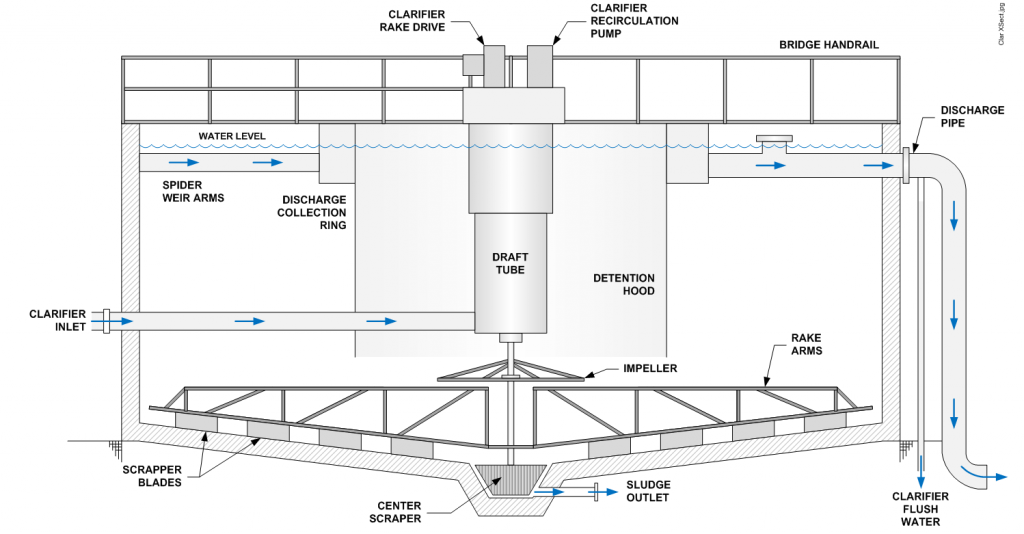
With increasing world population and advances in the industry, demand for quality water also continues to increase. As with most other industries, the power industry uses vast amounts of water for operations of the systems at each facility. To reduce cost, minimize environmental impact and operate within regulatory requirements, the power industry employs water treatment systems at each power plant. An important component of many water treatment systems is the Clarifier.
Clarifiers allow the separation of pollutants from chemically-treated wastewater and are often the final step of a water treatment process. Clean, treated wastewater leaving the clarifiers is normally reused in the plant or returned to local waterways.

As the name implies, clarifiers function through a process called “clarification”. Clarification of a liquid is a mechanical process where suspended solids in the liquid are separated from the liquid as it flows through the clarifier. This is accomplished by providing a reasonably long residence time and causing the liquid containing the suspended solids to travel a “tortuous path” through the clarifier. This tortuous path includes sharp changes in direction which enhance the tendency for the heavier suspended solids to fall out of its suspended state, allowing the solids to settle by gravity in the bottom of the clarifier as sludge.
Chemically treated and aerated water enters a clarifier and undergoes turbulent mixing to ensure the chemicals act on the entire incoming waste stream without being so turbulent as to break up the already-formed floc (loosely clumped mass of fine particles). The fluid then flows down into the main body of the clarifier, and then radially outward toward the outer wall. Continued flow then pushes the water upward near the outer wall of the clarifier, promoting the falling out of heavy floc, which also collects at the bottom of the clarifier as sludge. The clarified liquid exits the clarifier over weirs (a low dam built across the water that raises the level or regulates flow) at the top of the clarifier. Discharge from the weirs drains into the clarified water outlet. The effluent of the clarifier is monitored for flow, turbidity, and pH, to ensure compliance with discharge requirements.
Clarifiers are also typically equipped with motor-driven
rakes to promote the formation of an easily-dewatered sludge in the lower sludge
section. These rakes rotate very slowly,
pushing accumulated sludge around and down towards the center of the clarifier,
where it is collected for disposal.
Clarifier Underflow Pumps are typically used to transfer this sludge to
a sludge holding tank. From there, the
sludge is pumped to a Filter Press to be compressed and dewatered into sludge
“cake” suitable for disposal in a landfill.
As both new industry development and the human population continue to rise, so will the demand for high-quality water. The cost of quality makeup water will continue to increase and regulatory requirements on discharge to local waterways will become more stringent. Ensuring operators at your plant are properly trained on operations and maintenance of the water treatment system will ensure your plant remains profitable in a highly competitive market.
Interested in learning more about water purification?
Check out our other article: Water Purification to Improve Water Quality for Power Plant Operations
Ready to learn more about your Clarifier System? Contact FCS for more information on training at your facility.